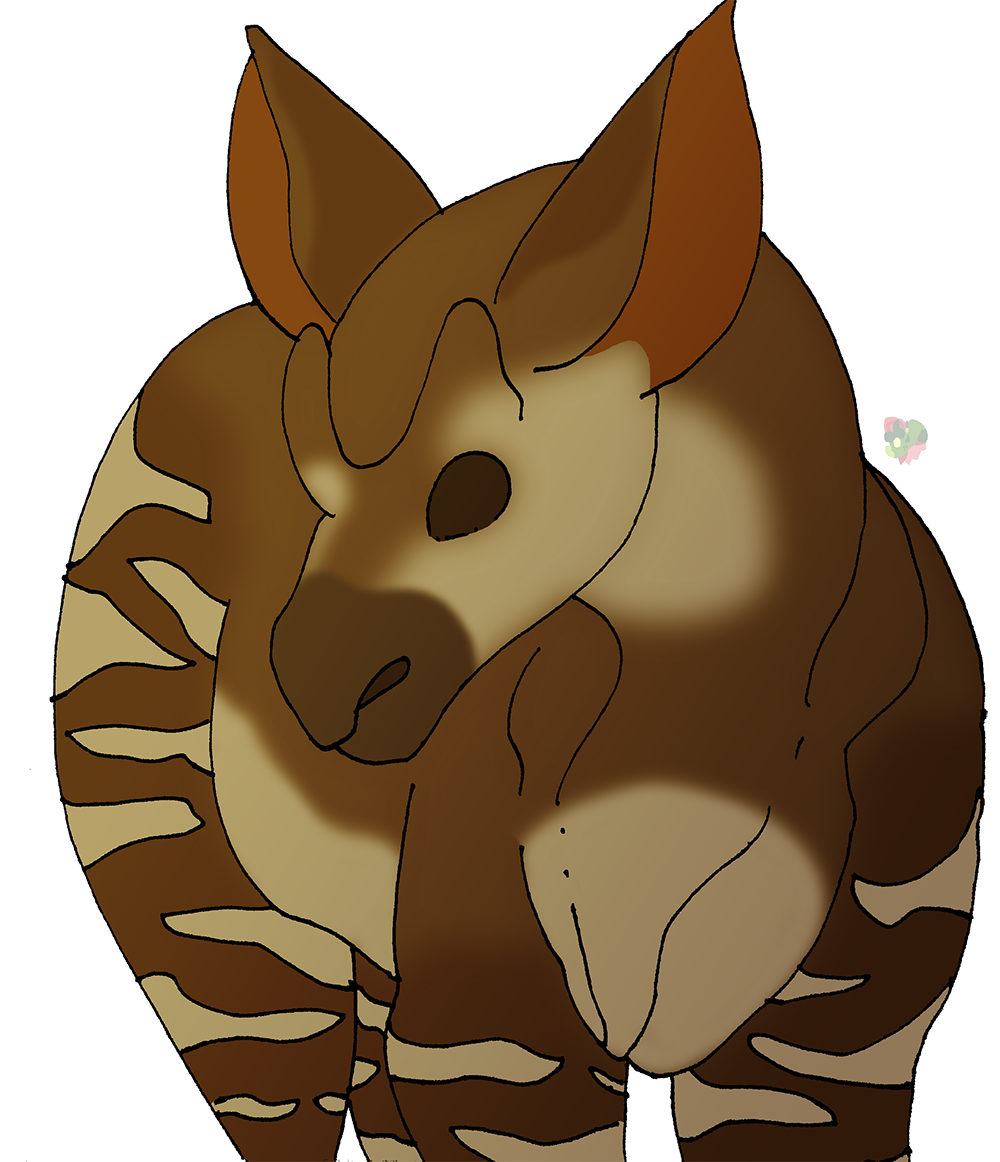The Okapi
The Okapi is called the Forrest Giraffe. Though they aren’t as tall as the actual Giraffe, they are known as Medium-Sized Giraffe. They are herbivores that grow about 8ft long and 5 ft tall. They have a tongue that can grow to be 14-18 inches long, they use this to grab food from the plants around them. Their diet consists of buds, fruits, twigs, and other vegetation. The Okapi can consume about 45-60 pounds of this diet a day with the included multivitamin of river bed clay and salt.
Their markings help with camouflaging, it’s also thick and oily which helps them keep dry in the rain. Though they look like herding animals they are very solitary and would rather be alone most of the time. They even mark territory with a sticky substance at the bottom of their hives, males mainly use urine. Though as said before, they would prefer to be solitary, they can congregate in small herds to eat, groom each other, and even play!
They are located in the rain forests of the Democratic Republic of the Congo in Central Africa, and according to the first paragraph of this National Geographic article, “Researchers estimate the populations of these endangered animals may have been slashed in half over the past two decades.” Humans are mainly to blame for their drastically dwindling population. With hunters and poachers just not caring for these creatures' life and only for the pelts and meat, to the deforestation of their natural habitats, they have been registered as endangered.
Though this is the case, I have found a website that wishes to aid the survival of the Okapi and the rainforests they live in. I will link it here.
The Okapi is called the Forrest Giraffe. Though they aren’t as tall as the actual Giraffe, they are known as Medium-Sized Giraffe. They are herbivores that grow about 8ft long and 5 ft tall. They have a tongue that can grow to be 14-18 inches long, they use this to grab food from the plants around them. Their diet consists of buds, fruits, twigs, and other vegetation. The Okapi can consume about 45-60 pounds of this diet a day with the included multivitamin of river bed clay and salt.
Their markings help with camouflaging, it’s also thick and oily which helps them keep dry in the rain. Though they look like herding animals they are very solitary and would rather be alone most of the time. They even mark territory with a sticky substance at the bottom of their hives, males mainly use urine. Though as said before, they would prefer to be solitary, they can congregate in small herds to eat, groom each other, and even play!
They are located in the rain forests of the Democratic Republic of the Congo in Central Africa, and according to the first paragraph of this National Geographic article, “Researchers estimate the populations of these endangered animals may have been slashed in half over the past two decades.” Humans are mainly to blame for their drastically dwindling population. With hunters and poachers just not caring for these creatures' life and only for the pelts and meat, to the deforestation of their natural habitats, they have been registered as endangered.
Though this is the case, I have found a website that wishes to aid the survival of the Okapi and the rainforests they live in. I will link it here.
Submitted By Grinnie
for Jungle Expedition: Report
Submitted: 3 years ago ・
Last Updated: 3 years ago
